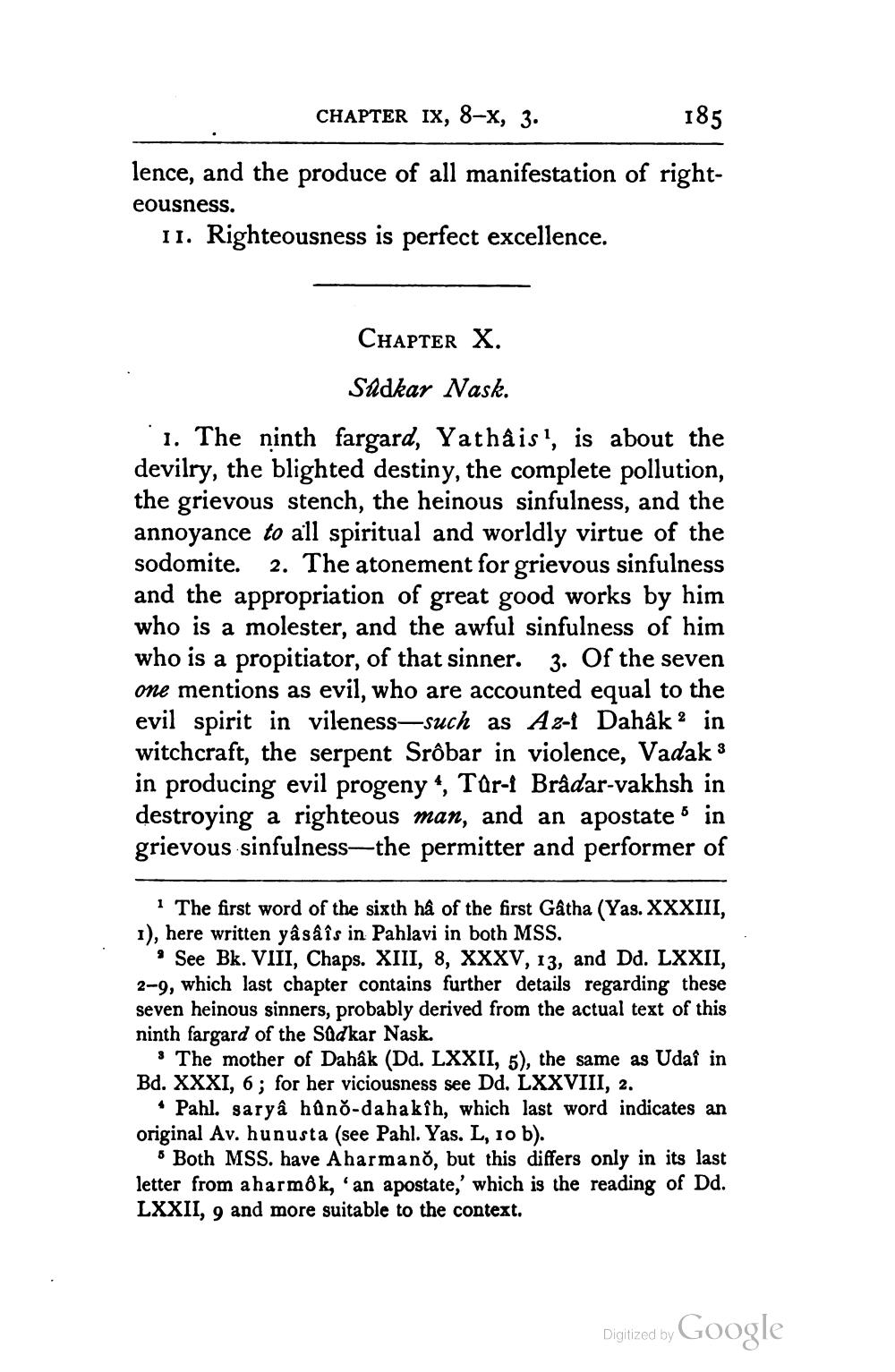________________
CHAPTER IX, 8-X, 3.
185
lence, and the produce of all manifestation of righteousness.
11. Righteousness is perfect excellence.
CHAPTER X.
Sadkar Nask. 1. The ninth fargard, Yathâis?, is about the devilry, the blighted destiny, the complete pollution, the grievous stench, the heinous sinfulness, and the annoyance to all spiritual and worldly virtue of the sodomite. 2. The atonement for grievous sinfulness and the appropriation of great good works by him who is a molester, and the awful sinfulness of him who is a propitiator, of that sinner. 3. Of the seven one mentions as evil, who are accounted equal to the evil spirit in vileness—such as A2- Dahâk ? in witchcraft, the serpent Srôbar in violence, Vadak 3 in producing evil progeny 4, Tar-t Brâdar-vakhsh in destroying a righteous man, and an apostate o in grievous sinfulness—the permitter and performer of
1 The first word of the sixth hâ of the first Gâtha (Yas. XXXIII, I), here written yâsâîs in Pahlavi in both MSS.
See Bk. VIII, Chaps. XIII, 8, XXXV, 13, and Dd. LXXII, 2-9, which last chapter contains further details regarding these seven heinous sinners, probably derived from the actual text of this ninth fargard of the Sadkar Nask.
The mother of Dabâk (Dd. LXXII, 5), the same as Udai in Bd. XXXI, 6; for her viciousness see Dd. LXXVIII, 2.
* Pahl. saryâ hûno-dahakih, which last word indicates an original Av. hunusta (see Pahl. Yas. L, 10 b).
Both MSS. have A harmano, but this differs only in its last letter from a harmók, 'an apostate,' which is the reading of Dd. LXXII, 9 and more suitable to the context.
Digitized by Google




